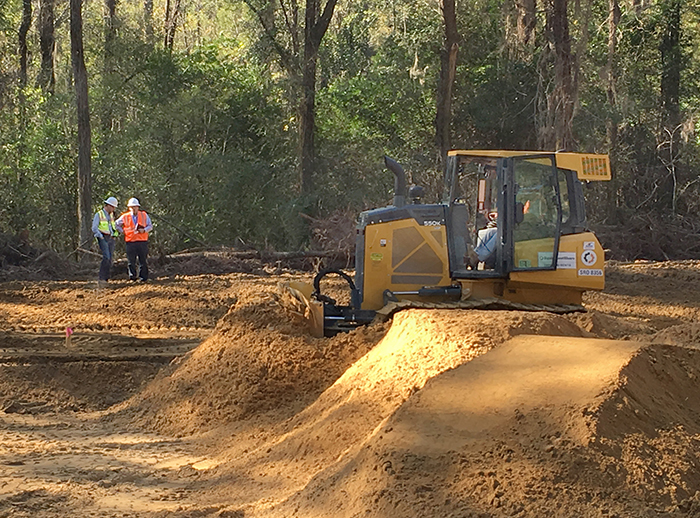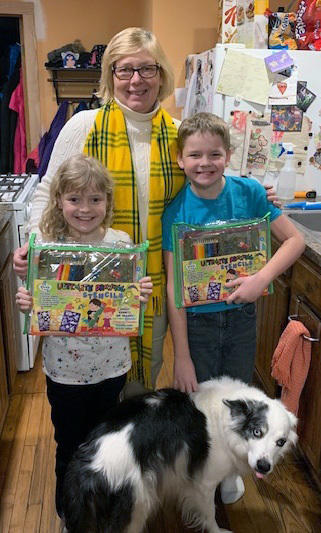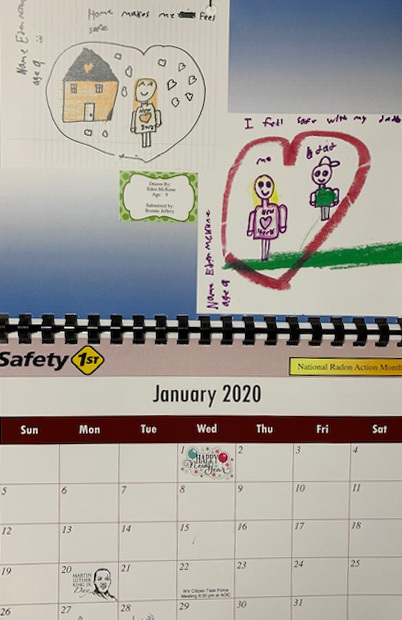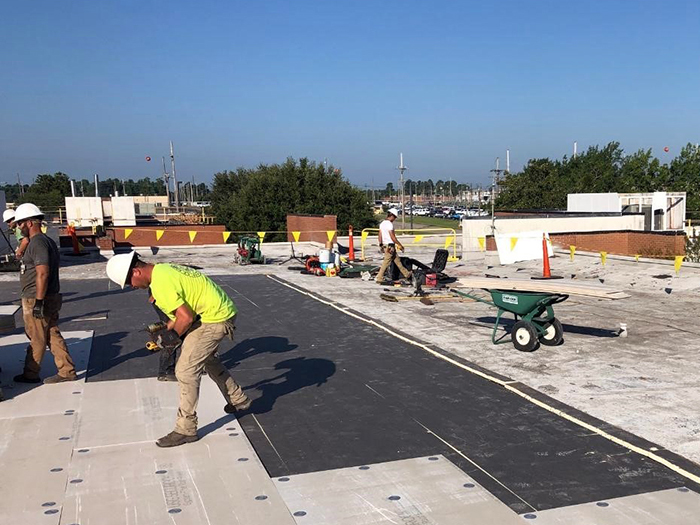 Before and after: A former waste basin near the center of the 300-square-mile Savannah River Site is shown at left prior to cleanup. Workers completed cleanup of the site, transforming it into an open field of grass, at right.
AIKEN, S.C. – A pond-like basin built in the early years of the Cold War was recently remediated to regulatory standards after Savannah River Site (SRS) workers filled it with 1,400 tons of stone and 7,000 cubic yards of dirt, and capped it with grass sod.
“It’s been a rewarding project and an excellent team to work with, and the icing on the cake is the fact that this project was completed about a year early,” said Steve Conner, engineer and project manager for EM contractor Savannah River Nuclear Solutions (SRNS).
An analysis of sediment and water showed that several types of waste were placed in the basin decades ago, when the site was named the Savannah River Plant.
“Herbicides and pesticides were the only substances found that were of potential concern for human health,” Conner said.
 Savannah River Nuclear Solutions engineers Justin Fuller, left, and Steve Conner evaluate progress in the cleanup of a pond-like basin containing low levels of herbicides and pesticides at the Savannah River Site.
The once swamp-like, algae-covered basin located near the center of the 300-square-mile site is now an open field of grass.
“Anything can be safely built or grown here, now and in the future, and if it is left alone, the site will return to its natural habitat, indistinguishable from the surrounding forest,” Conner said.
The basin is one of several waste sites EM workers have successfully remediated over the years at SRS.
“Each waste unit has presented its own set of challenges,” Conner said. “We’ve continually sought out new methods and technologies to steadily increase the effectiveness of our remediation practices and our environmental cleanup program as a whole.”
Crews have completed extensive cleanup and closure work at SRS under a consensus-based process in which the U.S. Environmental Protection Agency, the South Carolina Department of Health and Environmental Control, and DOE work together to reach agreement on key soil and groundwater remediation work.
“It took close coordination and focus from all parties to achieve this end state and get here early,” Conner said.
-Contributor: DT Townsend
WEST VALLEY, N.Y. – EM and its cleanup contractor at the West Valley Demonstration Project (WVDP) have come up with a new way to raise safety awareness, just in time for 2020: a calendar featuring drawings depicting general safety practices created by the children of employees.
“At the West Valley Demonstration Project, it is understood that safety must be something that is not just remembered, but put into practice every day and in everything we do,” EM WVDP Safety and Site Programs Leader Jennifer Dundas said. “The WVDP Integrated Safety Management System (ISMS) Committee recognized that safety does not start and stop at the worksite. The Family Fun Safety Calendar engages not just employees, but their families as well, and provides a constant reminder on safety awareness.”
 |
|
Ellie and Kael Tuttle receive artist kits from CH2M HILL BWXT West Valley Facilities Manager Lettie Chilson as a reward for creating drawings for the EM West Valley Demonstration Project’s Family Fun Safety Calendar. |
The Family Fun Safety Calendar features drawings by the children of employees at the West Valley Demonstration Project. The drawing for January was done by Eden McKune and submitted by CH2M HILL BWXT West Valley employee Bonnie Jeffery. |
|
 |
The ISMS Committee oversaw the project, with help from other employees. ISMS is a five-step method that calls for defining a scope of work, identifying and analyzing hazards, developing and implementing hazard controls, performing work within those controls, and providing feedback for continuous improvement.
The calendars, which were distributed to stakeholders and subcontractors, include monthly safety topics that can be discussed at worksite briefings.
“We wanted to find a new approach in creating safety awareness across the site, but in a unique way,” CH2M HILL BWXT West Valley ISMS Committee Chair Jennifer Henry said. “The calendar allowed us to promote safety on-site as well as at home, and the children’s drawings make them a got-to-have item.”
-Contributor: Joseph Pillittere
 Crews recently replaced a deteriorating, leaking roof at Savannah River Ecology Laboratory at the Savannah River Site.
AIKEN, S.C. – Workers have replaced the roof of a laboratory important to the Savannah River Site (SRS), ensuring the facility will continue safely housing University of Georgia (UGA) staff, students, and equipment, and the school’s animal care program.
EM contractor Savannah River Nuclear Solutions (SRNS) and subcontractor C.E. Bourne & Company, of Greenwood, South Carolina, a small, woman-owned business, successfully replaced the deteriorating, leaking roof at the Savannah River Ecology Laboratory (SREL).
“With the large number of competing infrastructure needs around the site, we are exceedingly grateful to DOE, SRNS Site Services, and the roofing subcontractor for responding to our dire need for roof replacement in a timely manner, and for insuring the safety and security of our staff as we conduct our mission here at SREL,” said Olin E. Rhodes Jr., SREL director.
The laboratory’s mission involves research, education, training, and community outreach. It was established after the late Eugene Odum, a professor of ecology at UGA known as the “father of modern ecology,” was invited by DOE’s predecessor agency, the Atomic Energy Commission, to conduct biological inventories of what was then known as the Savannah River Plant, before site operations began.
The roof replacement is among many upgrades across the 300-square-mile site.
“The majority of the improvements have involved installing new roofs, paving roads, and renovating buildings, all part of an effort to ensure continued achievements related to our site missions,” said Mark Eberl, SRNS subcontracts execution manager. “We are pleased that the same level of performance and dedication to safety applied to our projects could also be obtained for our friends at SREL.”
-Contributor: DT Townsend
|